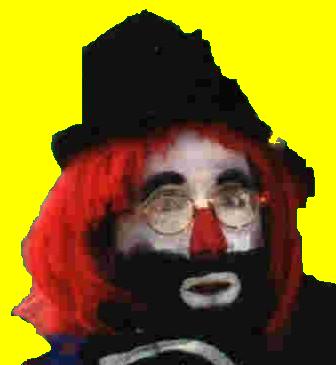 Wheeler
the
CLOWN
Wheeler
the
CLOWN
 Wheeler
the
CLOWN
Wheeler
the
CLOWN
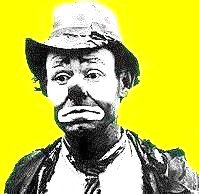
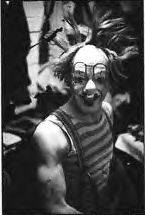

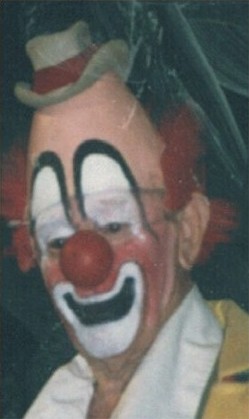
Think of the circus and what comes to mind? For most of us, select images are clear; the calliope (or Devil's Whistle, as it was at one time called, due to its ear splitting volume), the wild animal trainer, the men (or women) on the flying trapeze, and, of course, the Clowns.
Likewise, when most people think of Clowns, the circus Clown immediately comes to mind. Ask the average American to name a Clown, and, except for Ronald McDonald and Bozo, the answers most often given will probably be one of two Clowns; Lou Jacobs (far left above) and Emmett "Weary Willie" Kelly Sr., (far right above). Some seasoned circus fans will remember, Felix Adler (pictured further down on this page), billed at the height of his career as the King Of Clowns, and the equally great Otto Griebling (third from left above). British circus goers, I'm sure, would probably name Nikolai "Coco" Poliakov (second from left above) and his son, Michael (also billed as Coco, at least since his father's death).
As most
clowns know, some really great
clowns performed theatrically, not in a circus
 (Joseph
Grimaldi is classic example). But the circus is definitely the stage where
the
clown stands out as a king of professional performers.
Famous circus owner P. T. Barnum (far right) called
clowns (and elephants) "the pegs
upon which the circus is built." Another famous quote (author
unknown) is that
"Clowns are
the glue that
hold the circus together."
(Joseph
Grimaldi is classic example). But the circus is definitely the stage where
the
clown stands out as a king of professional performers.
Famous circus owner P. T. Barnum (far right) called
clowns (and elephants) "the pegs
upon which the circus is built." Another famous quote (author
unknown) is that
"Clowns are
the glue that
hold the circus together."
Most authorities on the subject agree that the first circus clown was "Mr. Merryman," a comical fellow wearing a tight fitting jacket with a frilled collar, striped hose, and a wig from which sprouted 3 peacock feathers. Mr. Merryman was a creation of circus owner Philip Astley in the 1700's. His job was to appear in the ring several times during the show to trade jokes with the ringmaster.
For many years, the solo
clown was a common sight at any circus; Mr. Merryman,
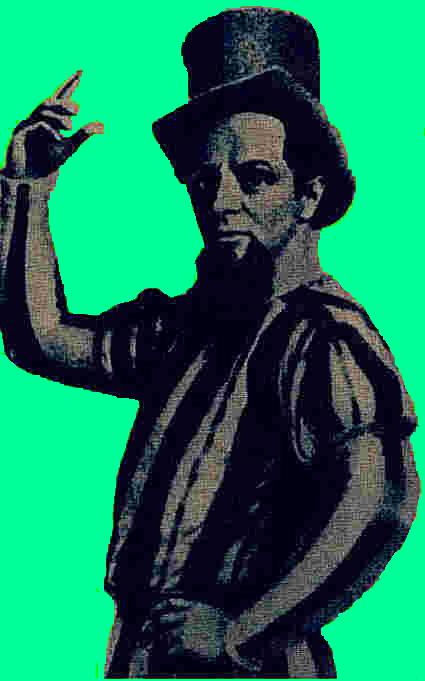
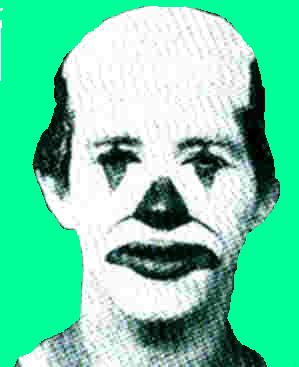 Yankee
Dan Rice, (left) Slivers Oakley, (right) and others (although
of course,
clown alley (the
clown's dressing tent) always stood close by the entrance
of the Bigtop entrance in case all
clowns
were needed for an emergency distraction).
Yankee
Dan Rice, (left) Slivers Oakley, (right) and others (although
of course,
clown alley (the
clown's dressing tent) always stood close by the entrance
of the Bigtop entrance in case all
clowns
were needed for an emergency distraction).
With the modern invention of the three ring circus, however, circus
owners began to feel that the solo
clown slowed down the pace of the show, and interfered
with the other performances. The
clown acts thus became a group effort; with no one particular
clown standing out over another. (In fact, to facilitate
this group effort and to blend the
clown into the show instead of making him standout,
clown alley is now filled with a variety of costumes and
props so that the
clowns can change at a moment's notice to reflect the
theme of that moment). There have been some notable exceptions to the group
act, such as Weary Willie, Lou Jacobs, and
David Larrible (left).
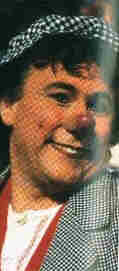 But
if you were to ask the average person to name a particular circus
clown who still performs today, it is doubtful that very
many would be able to rise to the challenge (David Larrible
notwithstanding); at least in the United States.
But
if you were to ask the average person to name a particular circus
clown who still performs today, it is doubtful that very
many would be able to rise to the challenge (David Larrible
notwithstanding); at least in the United States.
The size of the circus has limited the clown as well; the one-on-one interaction with the audience has given way to pantomime, grand gestures, and constant movement, usually performed as a group skit. The circus clown's makeup has also changed; features are almost always big and exaggerated so as to be seen on the back rows of a large audience.
In the early days of the circus,
clowns were mainly whiteface (Felix Adler (below)
is an
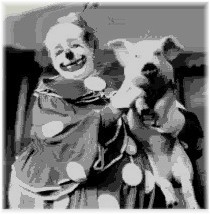 example of the grotesque whiteface). Today there
are three main types; the whiteface, the auguste (like Lou
Jacobs and Coco Poliakov), and the character
clown (which may be a cop, cowboy or whatever; but is
most often the hobo or tramp, such as Weary Willie). Traditionally,
the whiteface is in charge of the
clown situation; he knows the gag, and is hardly if ever
the butt of the joke, the auguste is the whiteface's comic foil, often
the butt of the jokes, the clumsy
Clown who never quite gets things right, and the
tramp is the ne-er do well; the
clown that knows life is stacked against him, but continues
to hope for that one small success that continuously alludes him. Again,
though, group
clowning makes these traditional distinctions difficult
so the roles of each type
of clown in a circus performance
today will not always fit historical tradtion.
example of the grotesque whiteface). Today there
are three main types; the whiteface, the auguste (like Lou
Jacobs and Coco Poliakov), and the character
clown (which may be a cop, cowboy or whatever; but is
most often the hobo or tramp, such as Weary Willie). Traditionally,
the whiteface is in charge of the
clown situation; he knows the gag, and is hardly if ever
the butt of the joke, the auguste is the whiteface's comic foil, often
the butt of the jokes, the clumsy
Clown who never quite gets things right, and the
tramp is the ne-er do well; the
clown that knows life is stacked against him, but continues
to hope for that one small success that continuously alludes him. Again,
though, group
clowning makes these traditional distinctions difficult
so the roles of each type
of clown in a circus performance
today will not always fit historical tradtion.
Circus clowning today is not easy; it involves running, pratfalls, tumbling, and often horseback riding. Hence the average circus clown is in as good a physical condition as any other circus performer. I know firsthand how physical circus clowning is, because the Shrine Clowns were kind enough to let an old patient (me) clown with them in the Shrine Circus one year. That was an experience I'll never forget, but I would definitely have to work out a lot more in order to do it on a daily basis.
Schools to train such clowns have existed for many years in the United States and in Europe, for the circus, as we know it, would cease to exist without clowns.
Clowns today perform in many functions; rodeos, birthday parties, grand openings, etc. But the circus clown remains at the top of the hierarchy; the true king of clowns.
Click Here to Return to
clown Menu
|